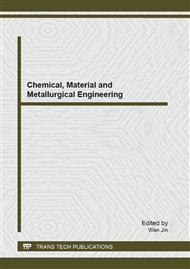p.496
p.501
p.505
p.511
p.515
p.520
p.524
p.529
p.533
Coiled Tubing Fracturing Tube Pressure Loss Prediction Model
Abstract:
A coiled tubing pressure loss prediction model was established by fluid dynamics theory and method which based on the basic characteristics of the non-Newtonian fluid rheology; Construction displacement, sand ratio and well depth parameters of the pressure loss in the pipe, and calculated pipe pressure loss when the actual pumping process through examples. Thesis proposes: (1) the bend within the pressure loss is an important part of the pressure loss, should be based on the construction object to choice coiled tubing length reasonable, and minimize elbow paragraph length in order to reduce the pipe friction pressure loss. (2) Flow and sand ratio have the same impact of the law with the depth changes in the pressure loss of the straight pipe segment and elbow segment, increases linearly with the depth, flow or sand ratio the larger, more dramatic increase with the depth. Flow or sand ratio the larger the total pressure loss of the tube with the depth decreasing amplitude the greater. (3) According to the actual pump injection procedure, the tube fluid rheological parameters will change, inject pre-flush and replacement fluid the pipe pressure loss low; inject sand mixing liquid friction pressure loss high.
Info:
Periodical:
Pages:
515-519
Citation:
Online since:
August 2013
Authors:
Price:
Сopyright:
© 2013 Trans Tech Publications Ltd. All Rights Reserved
Share:
Citation:


